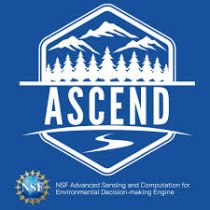Four aquatic sites fully operational with data available
September 29, 2016
In recent months, NEON has successfully outfitted four aquatic sites with a complete suite of sensors including in-stream sensors, groundwater well sensors and meteorological sensors. Observational samples are also being collected by field staff, making these four sites the Observatory’s first fully operational aquatic sites.
The sites include Posey Creek in VA (D02: Mid-Atlantic), Walker Branch in TN (D07: Appalachians & Cumberland Plateau), Mayfield Creek in AL (D08: Ozarks Complex) and Arikaree River in CO (D10: Central Plains).
Standardized observational and instrument data collection
At each aquatic site across the NEON network, a standardized suite of aquatic observations will be collected to characterize channel or lake morphology, chemistry, organism abundance and diversity, seasonal climatic and hydrologic changes, and riparian phenology. In addition, automated sensors will continuously collect aquatic data ranging from water quality measurements to localized atmospheric measurements.
Currently, Arikaree River offers the most available online data products including meteorological data on barometric pressure and several forms of incoming and outgoing radiation; as well as other data products documenting temperature, elevation and the conductivity of groundwater; stream discharge field collection data; as well as groundwater and streamwater chemistry data.
From sensor to data portal
Getting data onto the NEON data portal involves building and documenting an elaborate data pipeline. The steps involve designing, constructing, configuring and deploying sensors; creating spaces in a central database for receiving raw sensor data; writing computing code that integrates raw sensor data, sensor calibration information and quality control algorithms; and building the architecture for storing and serving output data to the scientific community.
Meteorological data are some of the first available from aquatic sites because they are generated using sensors that are already deployed on flux towers at terrestrial sites. The data pipeline has already been prototyped, tested, reconfigured as needed and completed; which means the process can be replicated relatively easily for new sites. Data on groundwater and surface water characteristics will appear behind meteorological data because they are derived from different sensors, with more complicated data streams, and because processing data, such as elevation, requires precise site specific information on sensor location.

